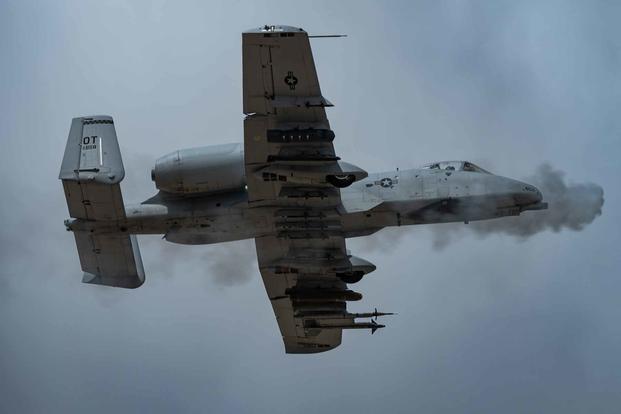Lawmakers are open this year to letting the Air Force retire more A-10 Warthogs under a draft defense policy bill, a sign that past fights to keep the aging aircraft in the fleet may be starting to lose steam.
A draft of the House's version of the annual National Defense Authorization Act policy bill -- which is being finalized this week -- would allow the service to reduce the number of A-10s to 218, shrinking the fleet by more than 40 aircraft from last year's number of 260.
The close-support aircraft with a more than 57-foot wingspan has been flown by the military since the 1970s. The signature "brrrttt" noise echoing from its 30-mm Gatling-style guns, which protected troops in Iraq and Afghanistan as well as the first Gulf War, helped build a passionate fan base among service members and Washington lawmakers, who have fervently protected it from retirement.
Read Next: Supreme Court Turns Away Veterans Who Seek Disability Benefits over 1966 Hydrogen Bomb Accident
For decades, the Air Force's efforts to send its A-10s to the boneyard have been stymied by Congress. Last year, however, in the 2023 NDAA, Congress finally allowed 21 of the planes to be retired, which marked the first retirements of that aircraft in the 21st century.
Notably, the 2024 draft NDAA would double that number of retirements to 42 aircraft.
The provision about A-10s in the gigantic defense bill must still be approved and possibly amended by the full House, and then reconciled with the Senate's version before eventually becoming law. The legislation isn't likely to be finalized until the fall or winter.
But, if approved by Congress, there are still conditions to letting the Air Force get rid of those aircraft.
If Air Force Secretary Frank Kendall wants to take the number of A-10s below 218, the service must supply a detailed report on how it will direct close-air support missions.
"The secretary of the Air Force may not reduce the total inventory of the Air Force of A-10 aircraft below 218 until the date that is 180 days after the date on which the secretary submits the report," the draft NDAA states.
Prior to last year, Congress had come to the rescue of the A-10 at least five times since 2014 by adding provisions in the NDAA to either prohibit the Air Force from retiring the aircraft or approving projects to keep it in the sky, according to the Project On Government Oversight, a nonpartisan, nonprofit watchdog group.
Air Force officials have said publicly that the slow A-10, often called a tank in the sky, would not be advantageous in a more modern fight against a country such as China.
Air Force Chief of Staff Gen. Charles "C.Q." Brown, who has been nominated as the next chairman of the Joint Chiefs of Staff, told reporters at the Air and Space Forces Association's Air Warfare Symposium in March that he expected the service to retire all A-10s by 2028 or 2029.
"I would say over the next five or six years we will probably [have] the A-10 out of our inventory," Brown told reporters. "The A-10 is a great airplane. It's a great airplane in an uncontested environment. The challenge is we're going to be in more contested environments in the future."
-- Thomas Novelly can be reached at thomas.novelly@military.com. Follow him on Twitter @TomNovelly.
Related: 21 Avenger Salute: Congress Sentences a Batch of A-10s to the Boneyard for the First Time in Decades














